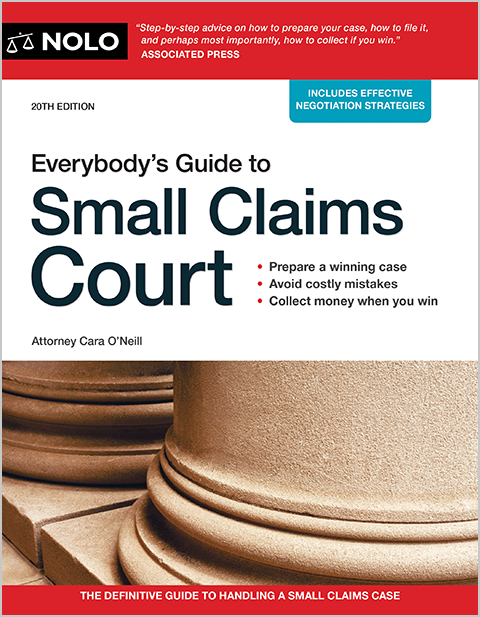Your financial recovery may be limited if your own negligence played a part in causing an accident.
Figuring out who's at fault for a car accident can be a difficult process. First, you must prove that the other driver was negligent. But even if you can do that, the other driver can avoid at least some legal responsibility by proving that you were also to blame. Shared fault rules called comparative negligence or contributory negligence can reduce the value of your claim, or even destroy it completely.
This article explains the basics of these shared fault rules. After reading this article, you'll better understand:
- the different kinds of comparative negligence
- why contributory negligence is a claim killer, and
- how comparative or contributory negligence gets proved.
Different Kinds of Comparative Negligence
Comparative negligence systems, which are the law in most states, divide fault between the parties involved in an accident. Let's begin by finding out how the rules generally work, then we'll look more closely at the two different comparative fault systems.
Comparative Negligence Generally: A Case Example
Suppose that Dan negligently makes a left turn and hits Ann, who is driving over the speed limit. Ann suffers injuries and sues Dan for negligence. Dan, in turn, claims that Ann is also to blame for speeding.
The case is tried by a jury in a comparative negligence state. The jury finds Dan 80% at fault for making an unsafe left turn. Ann, according to the jury, is 20% at fault for speeding. If Ann's losses ("damages") total $100,000, Ann will receive $80,000 ($100,000 - $20,000) after reducing her total damages for her 20% share of the fault.
In most comparative negligence states, as long as the injured victim isn't equally or mostly to blame for the accident, they can recover at least a portion of their damages.
Two Different Comparative Negligence Systems
Comparative negligence states fall into one of two groups: Pure comparative negligence and modified comparative negligence. Here's how each kind works.
Pure Comparative Negligence Rules
In pure comparative negligence states (including California, Florida, and New York), you can recover some compensation for your injuries as long as you weren't 100% to blame for the accident. If you're found to be 20% at fault, you can recover 80% of your total damages. If you're 99% to blame, you can still collect 1% of your damages.
Modified Comparative Negligence Rules
Most comparative negligence states aren't quite that generous, adopting what's known as a modified comparative negligence system. In some modified comparative negligence states, including, for example, Colorado and Georgia, you can recover damages only if you're less than 50% at fault for the accident. In these states, you can recover 51% of your damages if you're found to be 49% at fault. But if a jury decides that you were 50% (or more) to blame, you collect nothing.
In other modified comparative fault states (for example, Illinois, Massachusetts, Michigan, and Ohio), you must be 50% or less at fault in order to recover damages for your injuries. If your share of the fault comes to 51% or more, you don't get any damages.
Contributory Negligence: The Claim Killer
If you're injured in a car accident in one of the few contributory negligence states (Alabama, Maryland, North Carolina, Virginia, and Washington, D.C.), you might be in for a surprise (not the good kind) if your own negligence contributed to the crash.
Contributory negligence bars you from recovering any damages if the other driver can prove that your negligence contributed to the accident at all. If the other driver was 99% at fault and you were just 1% to blame, you get no damages. Contributory negligence truly is a claim killer.
How Comparative or Contributory Negligence is Proven
What does it mean to say that you—the accident victim—were negligent?
Any time you use the roads, whether as a driver, motorcyclist, pedestrian, bicyclist, or passenger, you must use reasonable care to protect your safety and the safety of others. If you fail to act as a reasonably careful person would under similar circumstances, you're negligent and you can be found to share fault for an accident.
Examples of Comparative or Contributory Negligence
Here are some examples of behaviors that might cause you to share fault for an accident:
- if you're a driver, speeding or driving unsafely for the road conditions
- as a pedestrian, jaywalking or making sudden or unexpected movements
- riding as a passenger with a driver that you know is drunk, reckless, or otherwise unfit to drive
- operating a vehicle that you know is defective (for example, without working headlights or brakes), and
- if you're a passenger, interfering with the driver's operation of the car or distracting the driver's attention from the road.
Your Negligence Must Contribute to the Accident
In order to be found partially at fault for an auto accident, your negligence must have actually contributed to causing the accident. What does this mean? Let's return to our example above, with drivers Dan and Ann.
Suppose the jury decides that although Ann was speeding, her excessive speed didn't actually contribute to causing the accident. In other words, the jury decides that the accident would have happened as it did even if Ann had been driving the speed limit. In that case, the jury wouldn't attribute any of the fault to Ann and she could recover her total damages of $100,000.
(Learn more about fault for a car accident, and how to prove it.)
Get Help Dealing With a Comparative or Contributory Negligence Defense
If you bring a car accident personal injury claim and the other driver claims that you share fault for the wreck, you should think about getting help. If you're in a contributory fault state, even the tiniest share of fault kills your claim. In a modified comparative fault state, too much fault does the same. The best result might come in a pure comparative fault state, but even then you can find the value of your claim significantly reduced.
An experienced car accident attorney is used to dealing with the shared fault rules in your state and can help you steer your claim to the best possible outcome. Here's how to find an attorney who's right for you and your case.



